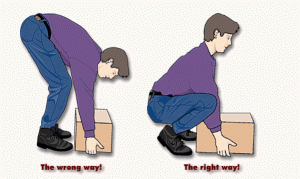Next week, we’ll be celebrating world spine day on October 16th. The theme for this year’s World Spine Day is “Get Spine Active” (#getspineactive), and the aim is to focus on proving the value in the phrase ‘movement is medicine’. Keeping your spine mobile while staying active helps to maintain flexibility and prevent back pain. This week, lets look at 5 easy ways to be more active and support spinal flexibility, without shelling out for a gym membership!
1 – Walk more
Believe it or not, just getting up and walking about is a great way to support overall movement and flexibility, after all, walking is what your body is primarily designed to do! It’s easy to add more walking into your day – but the trick is the make it a meaningful and worthwhile process. The usual suggestion is often “walk to work” but that’s not always convenient or practical for many of us – what you might be able to do however, is walk to lunch. Alternatively, consider making short but frequent trips to the local shops (you know, like we used to!) try cancelling your magazine subscriptions and purchasing them from the high street, or even having your home deliveries dropped off at your nearest pickup point. This kind of approach makes your walking purposeful and much easier to motivate yourself to do.
2 – Take the stairs
Stairs can be a real pain, especially if you live or work in a high-rise building – but it’s also the case that stair climbing is an excellent form of exercise which can support spinal health, not least because the climbing action can help to stretch out tense leg muscles which can contribute to back pain. Climbing stairs can also burn more calories than you might think. An average person will burn something in the region of 75-100 calories climbing stairs for 5 minutes – and if you multiply that out by the time you spend climbing, that figure can really add up!
3 – Spring (or winter) cleaning
You have to clean the house anyway right, so why not make a useful flexibility building exercise? Cleaning can be one of those activities which sometimes leads to back strain and even injury, but so long as you follow safe lifting and bending guidelines the frequent stretching, reaching and crouching which we need for cleaning can be almost as good as a session of yoga. Cleaning also burns around 200 calories an hour. Don’t avoid your cleaning, keep on top of it each week for a healthier spine, and a cleaner house!
4 – Set an alarm
Whether you’re a desk worker, or even someone who’s on their feet all day it’s easy for us to forget just how long we’ve been stuck in the same position. Long periods of inactivity are just asking of cramps, sprains and strains but can be easily avoided by setting yourself an alarm to remind yourself to get up and stretch out. Most of us are aware of this, but when you’re engrossed in your work it’s hard not to be distracted. To counter this, try setting yourself a reminder at least once an hour and use that opportunity to get up and stretch out for just a few minutes. Doing so will help to reduce stiffness and avoid pain.
5 – Consider a beginner’s yoga routine
When most of us think about yoga, we probably picture some of those mind-bending poses which professional practitioners can hold for seemingly hours, and which we can’t even come close to. Unlike many forms of exercise however, Yoga can be highly effective for spinal health even in its most basic form. Through performing just a handful of positions for 10-15 minutes a day, Yoga can help to improve flexibility, posture and strength as well as prompting good mental health, better balance and even bone health.
And when pain stops you..
All of the above suggestions are low impact, low risk forms of exercise which are safe for anyone to incorporate into their day – if you experience pain or discomfort when doing any of the above, you may well be suffering with a spinal health issue. Even small misalignments in the spine, sometimes known as “subluxations” can be responsible for considerable pain and frequently impinge movement. Back problems are also often associated with a general sense of tiredness or exhaustion, stiffness or “tightness” in the body – even if there is no pain.
If that sounds like you, fear not! These are exactly the kinds of issues that chiropractors specialise in dealing with. Back pain can often be a vicious cycle, in which you can’t manage to take action to deal with the pain because of the pain itself. Thankfully, chiropractic provides an all-natural way to eliminate the pain and stiffness, allowing you to return to spinal health – to find out more, why not take advantage of our New patient special today!

